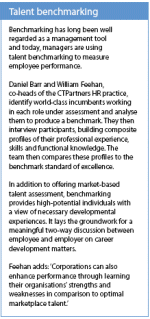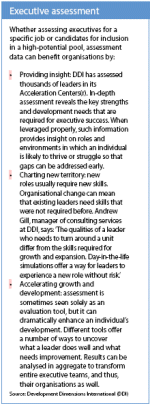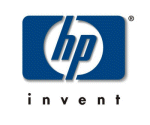HR Can Drive Results
Not enough companies are taking full advantage of their HR facilities. CTPartners’ Daniel Barr and William Feehan and DDI’s Andrew Gill tell Charlotte Stoker how they helped HP turn its HR department into a world-leading facility.
Periodically, major corporations recalibrate their strategic compass. Equally important, but often overlooked, is the need to conduct a strategic reassessment of human capital, including talent benchmarking.
Companies should be asking themselves whether the best available talent is on hand and whether it is being utilised and aligned effectively.
Marcela Perez de Alonso, executive vice-president of human resources at HP, understands the bottom-line impact of rigorous talent management and employee alignment. Since joining HP in 2004, Perez de Alonso has spearheaded significant transformation, including restructurings, consolidations, and process improvements that have helped to build a global HR organisation aligned to drive results and optimise growth for the $97 billion company.
Perez de Alonso, recipient of the 2007 Hunt-Scanlon Human Resource Leadership Award, says: 'At HP, the HR function serves as a true partner to the business groups, and our executives see the value that our organisation brings in attracting and retaining exceptional talent.
'HR is committed to strategic workforce planning and continually strengthening its leadership and employee development programmes.'
At HP, a comprehensive best-in-class HR project was designed to help drive business results and establish HP as one of the world's leading technology companies by aligning workforce planning and business transformation, people and leadership development, creation of a high-performing culture to maximise employee engagement and efficient programme and service delivery.
HR managers developed guiding frameworks for their strategies, defined their roles by benchmarking against best-in-class companies, conducted capabilities assessments for managers in these roles, measured gaps and designed development solutions to address these gaps.
THE ADVANTAGE OF PARTNERSHIP
HP enlisted two independent global firms – human resources consultants, Development Dimensions International (DDI), and executive recruiters, CTPartners, to assess more than 100 global HR executives on their knowledge, experience, skills and personal attributes.
The CTPartners team was led by William Feehan and Daniel Barr, partners and co-heads of the CTPartners HR practice. They offered a unique advantage thanks to their experience of working with best-in-class HR systems, managing HR organisations and as search professionals.
Feehan says: 'Talent benchmarking allows a company to measure the strength of its human capital against the best in the world and set that as a goal.' Without such benchmarking, companies can develop a myopic, internal focus when assessing talent.
Andrew Gill, manager of consulting services at DDI, led the HP initiative. He believes that corporations must consider what leadership and talent needs are being created or redefined by a company's business direction or initiatives: 'Corporations may be planning a new product launch, a process efficiency improvement effort or a global expansion. But do their leaders have the capabilities required?'
BENCHMARKING HR
A first step in any talent benchmarking is establishing standards. CTPartners created best-in-class knowledge and experience profiles for 25 different HR positions at HP. This involved reviewing the education, job assignment and employer history of recognised worldclass professionals for each role, and setting that level of knowledge and experience as HP's benchmark.
CTPartners then interviewed each HP participant to assess his or her professional knowledge and work experience. It also investigated whether each person was ready for the next management challenge or leadership role.
DDI meanwhile evaluated executives on their skill levels/competencies and personal attributes. Gill explains: 'Personal attributes help people leverage experiences, knowledge and skills, or work against their effectiveness.' Failing to recognise such qualities and how to best employ them can derail otherwise qualified professionals.
DDI assessed HP executives through a business-based simulation, interviews and personality inventories. Participants faced executive challenges, both strategic and operational, such as postmerger culture clashes, a festering retention problem, ineffective work groups and endless emails.
Upon assessment completion and review, participants were encouraged to draft personal career development plans. Feehan says: 'People might consider and request external training, feedback and job rotation. Previously, employees were expected to be passive, but this is collaborative. Employees can identify career development gaps and think about how to close them.'
REVEALING THE HIDDEN TRUTH
Human capital assessment can identify potential leaders who are currently underutilised. Barr says: 'Sometimes, up-and-coming "A" players get stuck behind "B" players. They can feel frustrated because their experience and talent are not recognised or well leveraged.'
Assessment can also distinguish between an individual's perception of their personal capabilities and the reality.
Gill explains: 'Recording a participant's meeting with peers might show that the executive presented logical solutions but missed opportunities to build on others' ideas, failing to gain buy-in to their approach. This could be an area for personal development.'
Human capital assessment improves employee retention and recruitment. Barr says: 'HP is taking a proactive role, giving employees the feedback and experiences that best-in-class people want.'
Many companies talk about investing in their people, but HP is delivering on that commitment. HP's HR department is placing rigour, discipline and structure around talent management and development, ensuring that it has the right skills and competencies to help drive results for HP.
In the past, HR's primary objective was to deliver transactional services. Today, it must offer the skills and capabilities to provide strategic counsel in the form of workforce planning, organisational design and leadership development.
Perez de Alonso adds: 'As drivers of the human dimension of the business, HR is focused on and committed to ensuring that its people strategy helps HP win with customers, shareholders and employees.'



